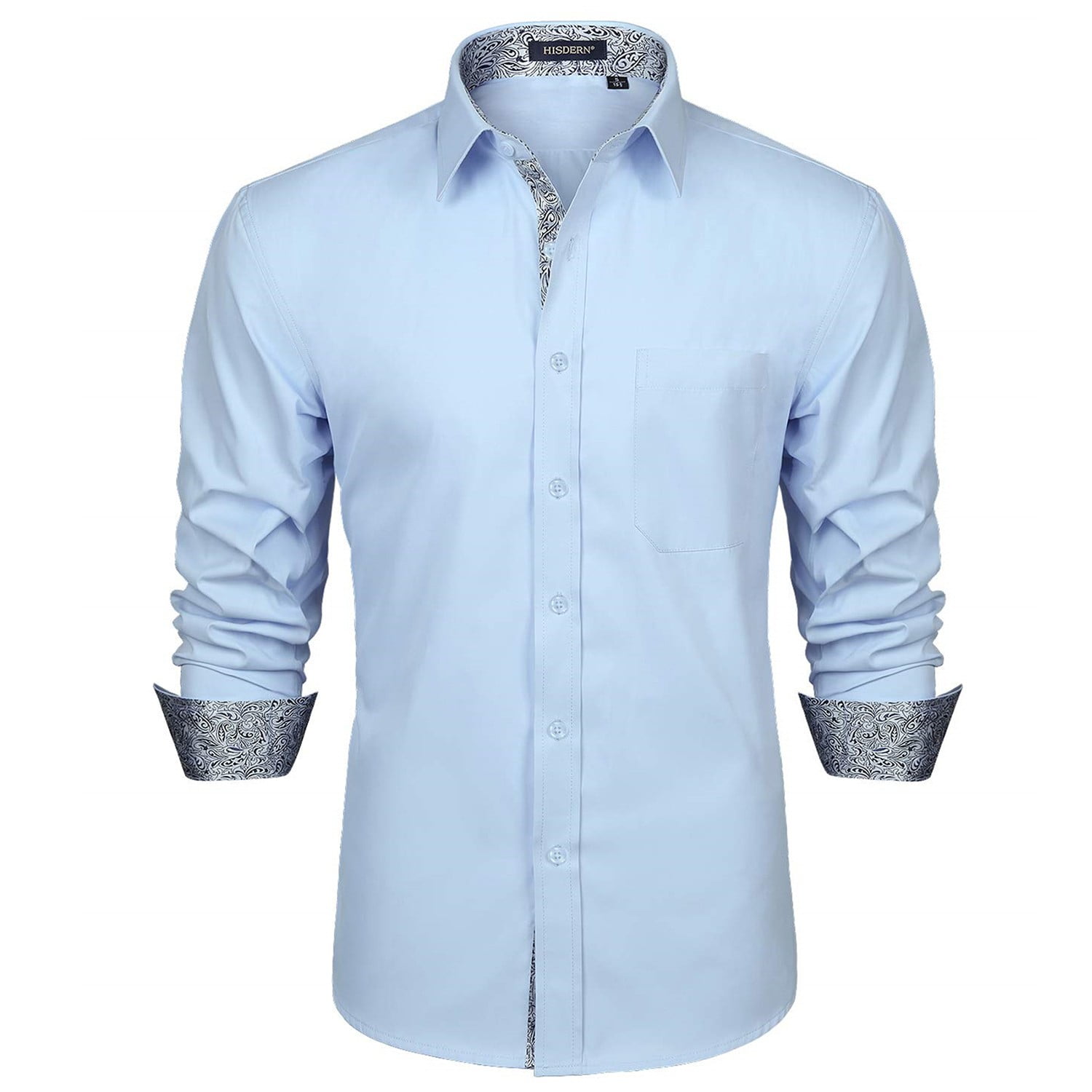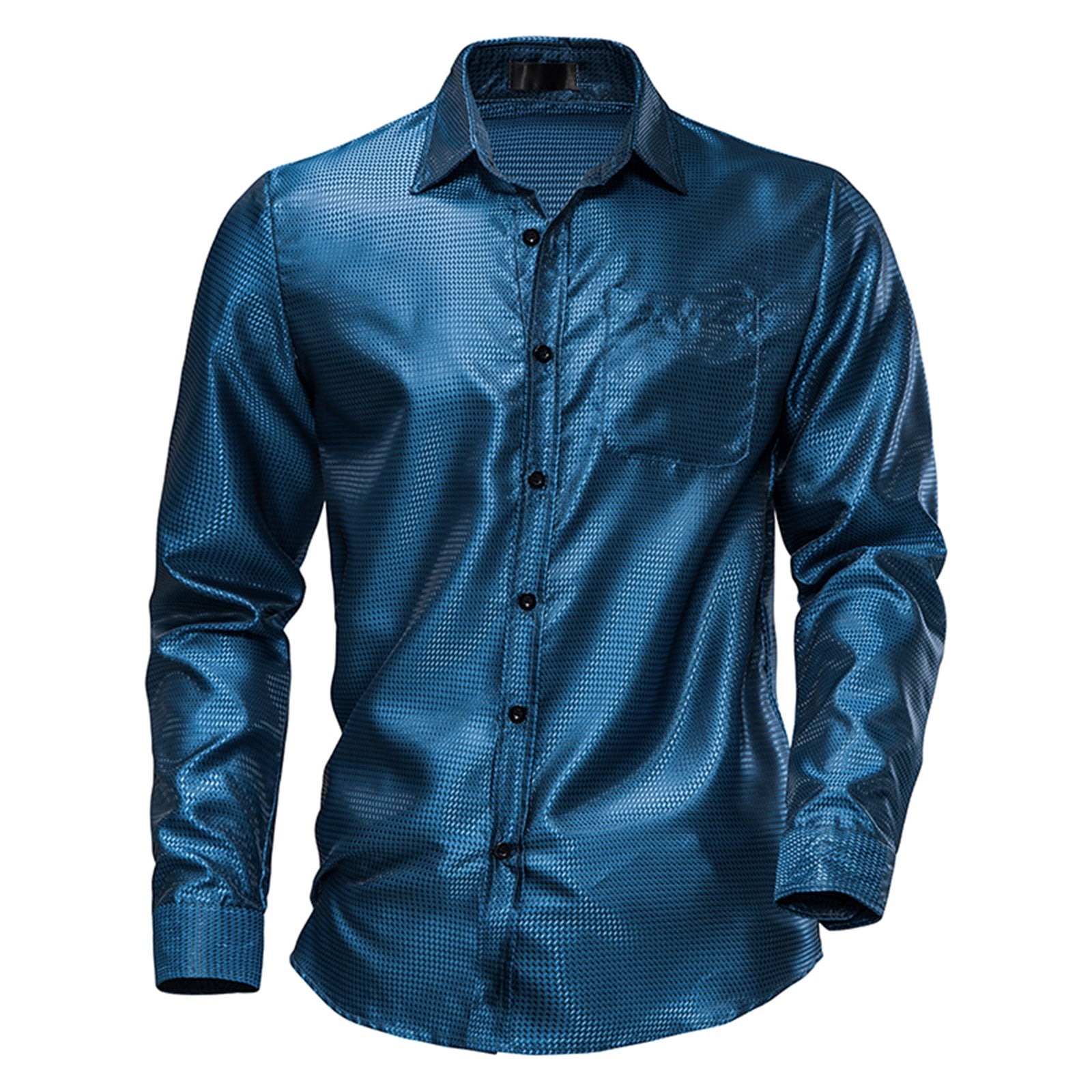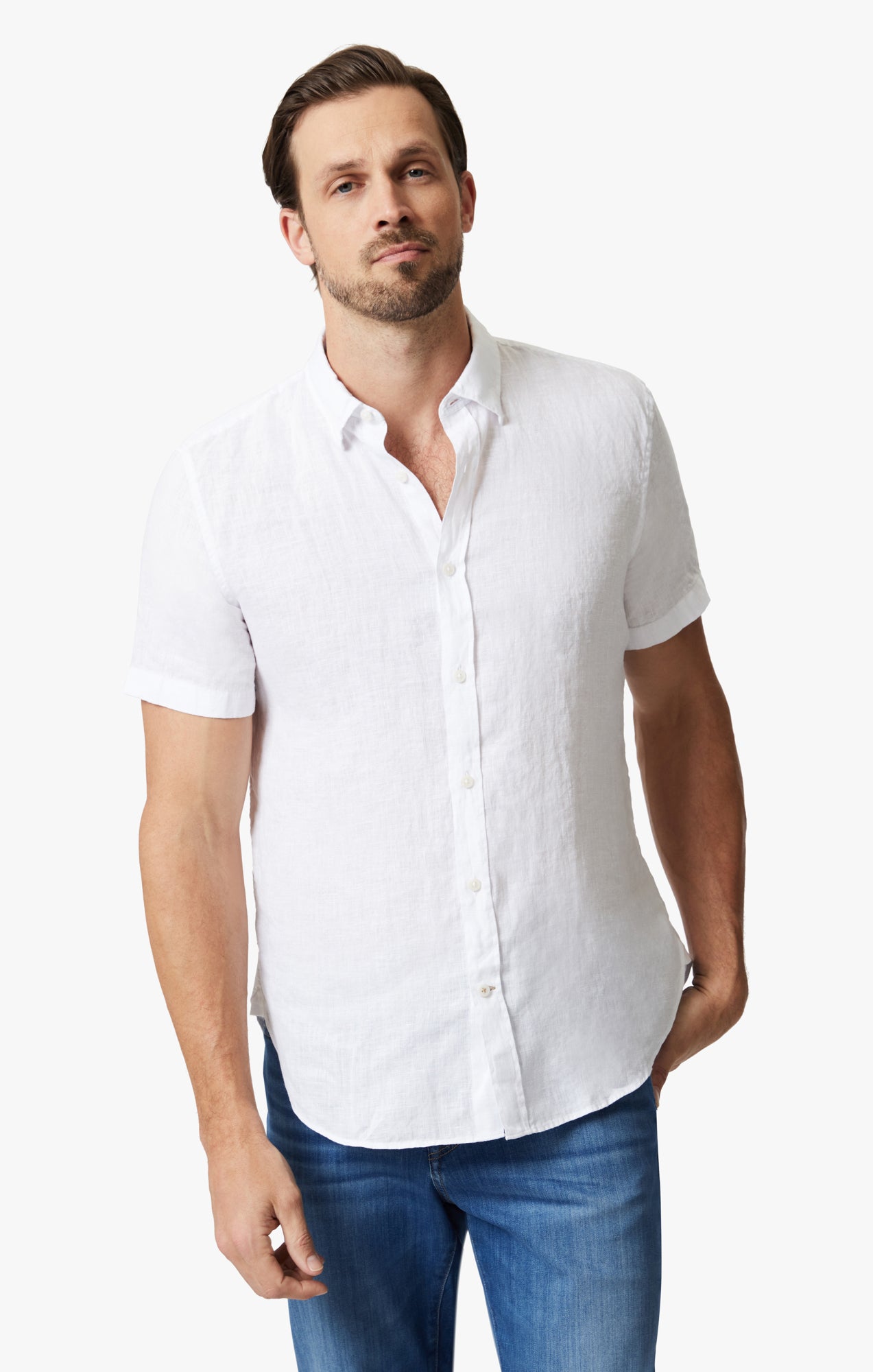How to measure dress shirt size? Finding the perfect fit for a dress shirt is essential to achieve a polished and professional appearance. To ensure a well-fitted dress shirt that flatters your body shape, it is important to accurately measure your size. In this comprehensive guide, we will explore the step-by-step process for measuring dress shirt size. From collar and sleeve measurements to body measurements, you’ll learn how to find the optimal fit for your dress shirt. Let’s delve into the world of measuring and find the key to the perfect dress shirt size.

Collar Measurement:
The collar measurement is crucial in determining the right size for a dress shirt. Here’s how to measure your collar size:
- Take a soft tape measure and wrap it around your neck at the point where the collar will sit. Make sure the tape is snug but not too tight.
- Read the measurement where the tape meets itself. This measurement is your collar size.
- Note that polo white shirt sizes typically come in half-inch increments, so round up or down to the nearest half-inch if needed.
Sleeve Measurement:
The sleeve measurement determines the length of the dress shirt sleeves. Follow these steps to measure your sleeve length accurately:
- Begin by standing straight with your arm relaxed and slightly extended at your side.
- Ask someone to help you measure from the center-back of your neck, across your shoulder, and down to the wrist. Alternatively, you can bend your elbow slightly and measure from the center-back of your neck to your wrist bone.
- Note the measurement in inches. This is your sleeve length.
Body Measurements:
Body measurements play a vital role in determining the overall fit of a dress shirt. Here are the key body measurements to consider:
- Chest measurement: Wrap the tape measure around the fullest part of your chest, ensuring that it passes under your armpits and across your shoulder blades. The measurement should be taken with your arms relaxed but not too loose or tight.
- Waist measurement: Measure around your natural waistline, which is typically the narrowest part of your torso, just above your belly button. Ensure the tape measure is snug but not tight.
- Hips measurement: If you prefer a slim fit dress shirt, measure around the widest part of your hips and buttocks. If you prefer a more relaxed fit, this measurement is less critical.

Considerations for Fit Preferences:
While taking accurate measurements is vital, it’s also important to consider your fit preferences and style. Keep the following factors in mind:
- Fit options: Dress shirts are typically available in three main fit options: slim fit, regular fit, and loose fit. Consider your body type and personal preferences when choosing the fit that suits you best.
- Allowance for movement: Remember to provide a little extra room in the measurements to ensure comfortable movement, especially in the chest, shoulders, and arms.
- Tailoring: Depending on your measurements, you may need to consider getting your dress shirt tailored for the best fit. Customizing the short sleeve linen shirt to your specific measurements can provide a polished and professional appearance.
How to choose a dress shirt that suits you
A well-fitted dress shirt is a wardrobe staple that exudes sophistication and style. However, finding the perfect dress shirt can be a daunting task with various sizes, styles, and fits available. To ensure you select a dress shirt that not only flatters your body shape but also suits your personal style, it is important to consider factors such as fit, fabric, collar style, and color.

Determine Your Dress Shirt Size:
The first step in choosing the right dress shirt is determining your size. Consider the following factors:
- Neck size: Measure your neck circumference with a soft tape measure just below the Adam’s apple. Ensure the tape is snug but not tight. Round up or down to the nearest half-inch to determine your collar size.
- Sleeve length: Measure from the center-back of your neck to your wrist bone or where you prefer the dress shirt sleeve to end. Ensure the tape measure follows the natural curve of your arm.
- Body measurements: Take measurements around your chest, waist, and hips to determine the appropriate size for the dress shirt. Match these measurements with the dress shirt sizing charts provided by retailers.
Focus on Fit:
Choosing the right fit is crucial for a stylish and comfortable dress shirt. Consider the following fit options:
- Slim fit: Slim fit dress shirts are tailored with a narrower cut across the chest, waist, and sleeves. They provide a more streamlined and modern silhouette that flatters a leaner body type.
- Regular fit: Regular fit dress shirts offer a classic, more relaxed silhouette that suits most body types. They provide more room in the chest, waist, and sleeves, allowing for a comfortable fit.
- Athletic fit: Athletic fit dress shirts have a broader cut across the shoulders and chest while tapering down to a slimmer waist. They are suitable for individuals with a more muscular build.

Choose the Right Fabric:
Fabric plays a significant role in the comfort and overall appearance of a dress shirt. Consider the following fabric options:
- Cotton: Most dress shirts are made from cotton due to its breathability and versatility. Look for high-quality cotton fabrics like Egyptian cotton or Supima cotton for a soft, luxurious feel.
- Linen: Linen dress shirts are lightweight and ideal for warm weather. They offer excellent breathability but tend to wrinkle easily.
- Dobby or twill: These fabric weaves create a subtle pattern and texture on the dress shirt. They offer a refined and sophisticated look, perfect for both formal and casual occasions.
- Non-iron or wrinkle-resistant: Non-iron or wrinkle-resistant paris t shirt are treated to resist wrinkling, making them low maintenance and suitable for individuals with a busy lifestyle.
Consider Collar Style and Cuff Design:
The collar style and cuff design can significantly impact the overall look of a dress shirt. Consider the following options:
- Collar style: Common collar styles include the classic point collar, spread collar (wider distance between collar points), button-down collar (collar points fastened with buttons), and cutaway collar (wide collar spread). Choose a collar style that complements your face shape and the occasion.
- Cuff design: Dress shirt cuffs come in various styles, including barrel cuffs (standard button cuffs) and French cuffs (folded and fastened with cufflinks). French cuffs offer a more formal and elegant appearance, while barrel cuffs are more versatile for both formal and casual settings.

Conclusion:
Measuring dress shirt size accurately is essential for achieving a well-fitted and polished look. By measuring your collar size, sleeve length, and key body measurements such as chest, waist, and hips, you can determine the appropriate size for your dress shirt. Remember to consider your fit preferences and style, allowing for movement and the potential need for tailoring to achieve the best fit. With the right measurements and attention to detail, you can confidently shop for dress shirts that will enhance your appearance and provide a comfortable and stylish fit.
